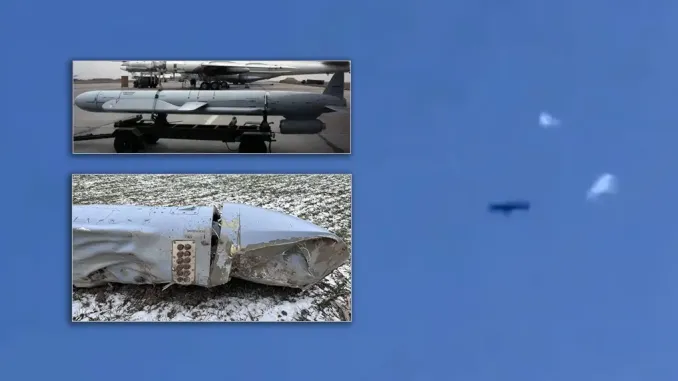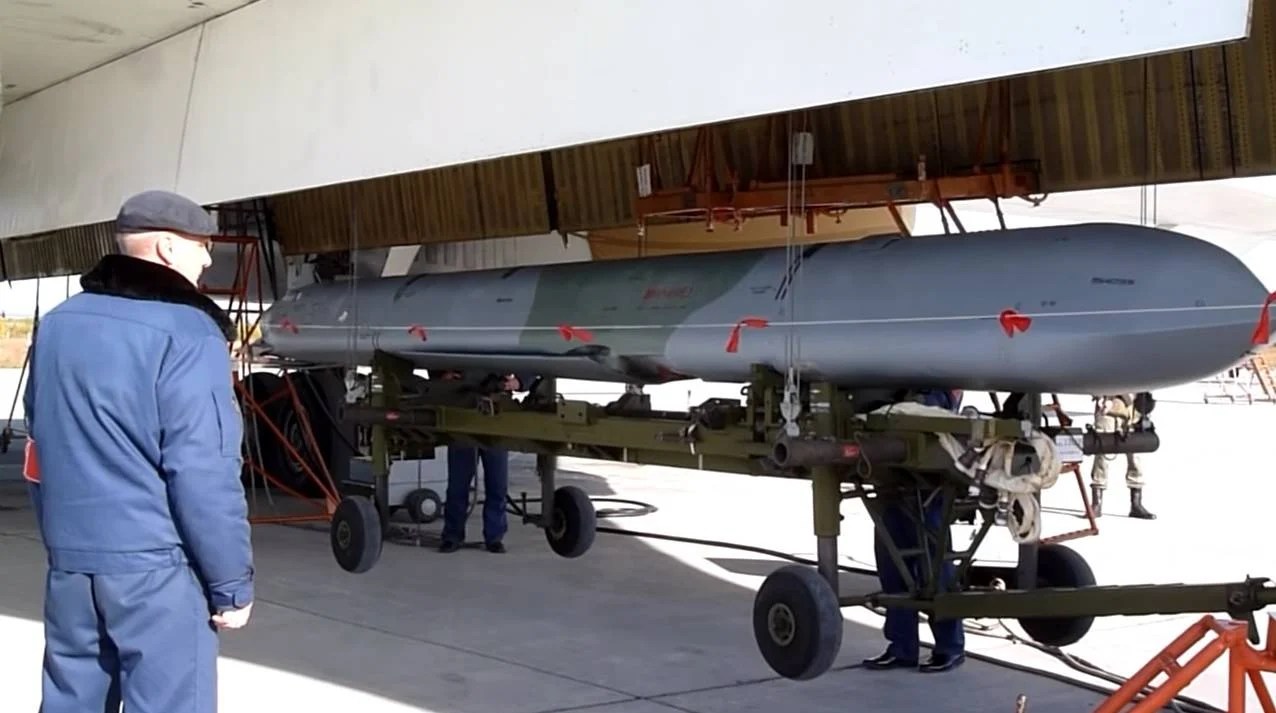Source : The EurAsian Times
Russia has reportedly modified its air-launched cruise missile (ALCM) Kh-101, launching thermal decoys. While the modifications have been speculated for some time now, the first video of Kh-101 dispensing decoy flares just before hitting its target has surfaced.
Ukraine claimed at the beginning of January 2023 that the missiles had been equipped with this capability after it recovered a largely intact missile. It was subsequently confirmed to be a countermeasures dispenser system.
Uncertainty surrounds the location and timing of the video, which surfaced on social media earlier on December 30 and showed the Kh-101 deploying countermeasures.
1st Video Of Flare Dispensing Russian Kh-101 ALCM To Confuse Ukrainian Air Defence System Emerges

Its appearance does, according to Ukrainian authorities, come after a heavy missile and drone assault on cities throughout Ukraine, which included the firing of at least 90 air-launched cruise missiles, including the Kh-101, Kh-55, and Kh-555 models.
On Friday, Russia launched the largest airstrike of the conflict against Ukraine, striking towns and infrastructure throughout the nation and leaving 31 people dead and over 160 injured.
The subsonic Kh-101 (as well as its nuclear-armed cousin, the Kh-102) is a substantially revised derivative of the Kh-55/Kh-555 family with some stealthy features and other improvements.
The Kh-101, visible in the extremely grainy video, is seen launching a blend of chaff and flares. It is still unknown how the countermeasures are triggered. The missiles have probably been pre-programmed to launch the flares upon reaching a specific point, like a terminal phase nearer the target or an area where threat systems are believed to be en route.
Kh-101s with and without countermeasures capabilities (as well as other cruise missiles) could be employed in waves together, with the former helping to pave the way to the target areas.
The sound of the countermeasures blasting off when they are fired is audible in the footage. Notably, they also don’t have the streams of smoke that frequently accompany decoy flares.
These could be smaller flares with shorter burn durations overall or spectral flares in which the primary heat plume is invisible to the unaided eye. Additions such as bundles of thin metal strips, metalized paper, or fiberglass threads can also be used to create radar-confusing chaff. Nevertheless, from the ground, the chaff is usually not easily visible.
Russia’s ‘Most Capable’ Air-Launched Cruise Missiles
Kh-101 is one of Russia’s most potent ACLMs. The missile’s development started in the 1980s to replace the Kh-55. Even though it is based on the Kh-55 series, the Kh-101 has stealth features to increase its potency. It represents a significantly redesigned exterior design intended to be at least partly stealthy.
The missile first flew in 1998, but its first images only appeared in the public domain in 2007. On the outside, it resembles the US AGM-158 JASSM air-launched cruise missile in several ways, although the Kh-101’s range is far greater. It has a maximum range of 3,000 kilometers.
The upgraded Tu-160M and Tu-95MSM strategic bombers carry the Kh-101. A conventional warhead weighing 400–450 kg is attached to it. There are three types of warheads: submunitions, penetration high explosive, and high explosive.
The Kh-102, a nuclear-armed version of the weapon, can carry a 20-kiloton thermonuclear warhead. It is the primary air-launched nuclear-armed cruise missile of the Russian Aerospace Force (VKS).
Unraveling Russia’s Deadly Missile
The Kh-101 was first deployed in battle in Syria in 2015. Since the conflict in Ukraine began in February of 2022, this missile has been widely utilized in the conflict.
The high failure rate of the Kh-101 missiles during long-range attacks on targets in Ukraine has made headlines. “They’re failing to launch, or they’re failing to hit the target, or they’re failing to explode on contact,” a US Defense official stated during a briefing in March of 2022.
The Ukrainian Air Force in January 2023 claimed that the Russian military fired 55 missiles from both land and sea. These missiles included the sea-launched Kalibr missile and the air-launched Kh-101, Kh-555, Kh-59, and Kinzhal hypersonic missiles.
The Ukrainian Air Force said that 40 of the missiles fired by Russia were Kh-101s/Kh-555s and that 47 of these missiles were shot down.
In the later barrage of missile attacks from Russia, Ukraine managed to recover a fairly intact Kh-101. As per claims, the massive missile and drone strikes carried out by Moscow across Ukraine on February 10, 2023, used Kh-101 ALCMs produced in the first quarter of 2023.
In a briefing by the Ukrainian military’s media center, a representative of the research center, Colonel Mykola Danyliuk, revealed some of the new technologies found inside the Kh-101s shot down by Ukrainian air defense.

Danyliuk’s briefing also explained a portion of the intact Kh-101 wreckage discovered in Vinnytsia. This section featured twelve circular holes filled with mud, arranged in two symmetrical rows of six holes each. It was hypothesized that these holes were designed to dispense countermeasures, such as the radar-confusing chaff, to fool adversarial air defense radars.
Under certain conditions, a basic and unrefined radar warning receiver could automatically initiate its employment upon detecting pre-programmed radio-frequency emissions. Additionally, it was speculated that they might be pre-programmed to launch at particular weak spots along the missile’s flight path.
The holes found on the wreckage of the Kh-101 were similar to the countermeasure dispensers on American aerial target drones, such as the BQM-167 Skeeter, which were also utilized in actual combat operations during the US-led invasion of Iraq in 2003 to dispense chaff to protect the path of friendly aircraft and missiles by confusing the Iraqi radars.
This was corroborated by Danyliuk’s briefing, which claimed that the holes are used to automatically fire “radio flares” when the cruise missile detects radar activity.






